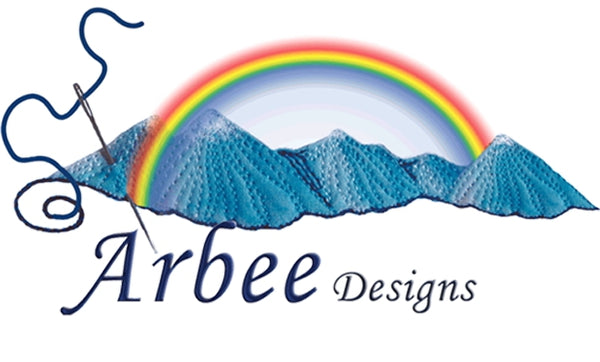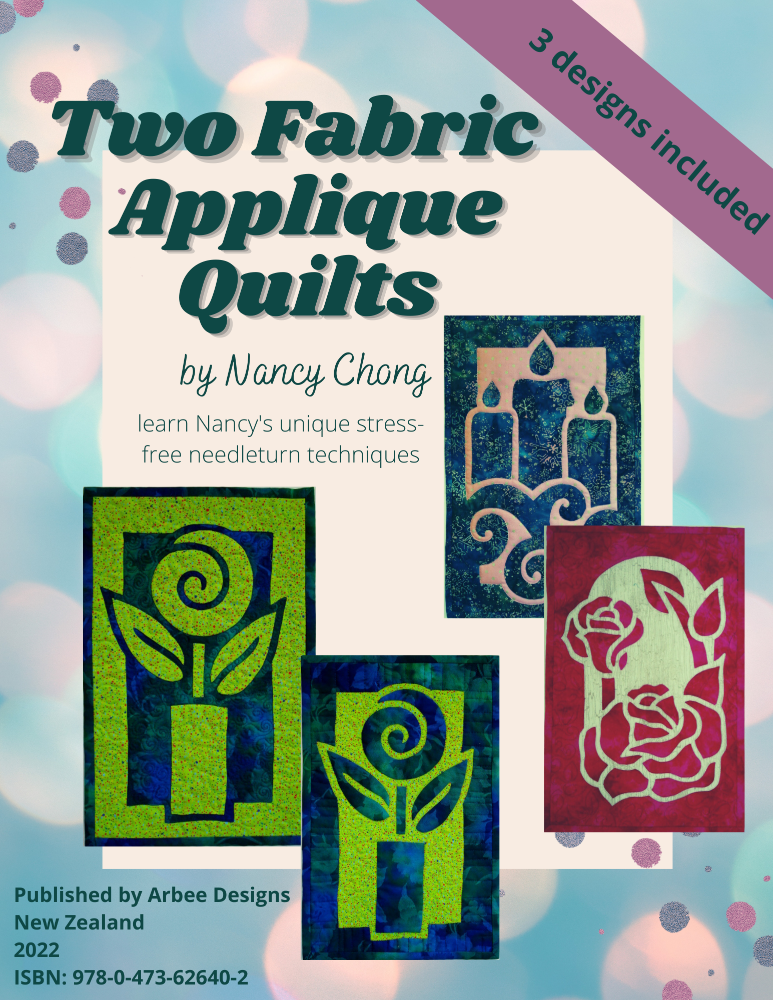

- Description
- Requirements
If you want a positive appliqué experience, this is the ebook for you. Nancy’s unique and bold design concept is easier than you can imagine, making these quilts fast, fun and portable. Nancy assumes that her students learn best with lots of information and that starts with her well-explained Supply List. In this ebook, she teaches you how to hand appliqué using her unique stress-free needleturn techniques while making one of the three designs she created just for her online students. You will also learn how to use her patterns for machine appliqué and raw edge appliqué.
Level: Although this is a great learning experience for beginners, experienced appliquérs will learn new skills, too.
OUTLINE
Part One
- Print patterns
- Discuss fabric choices and pattern placement
- symmetrical
- asymmetrical
- Mark appliqué fabric
- Layering fabrics
- pinning layers
- thread basting layers
- Cutting appliqué fabric
- Substituting a third fabric
Part Two
- Thread length
- Seam allowance
- Hand appliqué - the basic stitch
- Needleturn
- straight edge
- point
- valley
- inside curve
- outside curve
Part Three
- Quilting concepts
- Squaring up your quilt
- Binding - single layer
- Sleeve
- Label
- Bonus: Fabric preparation for
- machine appliqué
- raw edge appliqué
FABRIC (per design)
Top - One fat quarter appliqué fabric and one fat quarter background fabric
If you choose an obviously directional print for your appliqué fabric, where the print (such as umbrellas or buildings) is running parallel to the selvedge, then use 5/8 yard (and this will include enough for the binding).
Back - 1 fat quarter
Batting - approximately 17" x 21" thin cotton or other fiber content.
Binding - 1/4 yard (or 1 fat quarter) of either appliqué or background fabric
Sleeve - 10" x 8" cotton fabric
Label - Light cotton or muslin. Size will be determined by how much you want to write. A 6" square usually works for me.
NOTIONS
- marking tools - temporary, semi-permanent, or permanent markers that will show on the right side of your appliqué fabric.
- Milliner’s or Straw hand appliqué needles size 10 or 11
- basting needle - any long needle that goes through the fabric easily
- 1 spool thread that matches your appliqué fabric
- ugly thread for basting - choose something that shows up well but looks ugly
- straight pins (approximately 20-50)
- rotary cutter, mat, and ruler
- fabric cutting scissors
OPTIONAL ITEMS
- masking tape, if using window as a light box
- thimble, if you use one
- needle threader
- light box
- pattern transfer paper
Note: detailed notes on all Supplies are given in the ebook
Notes about Fabric Considerations
I prefer to use 100% cotton fabrics because they are user-friendly, last a long time, are readily available, are easy to care for and are easy to hand appliqué. However, you can use any fabric you want.
It is very important that you choose two fabrics that allow you to see the appliqué design clearly from at least 10 feet away. The best way to accomplish that is to choose two fabrics that contrast strongly with each other. Avoid pairing medium-value fabrics or using printed fabrics that distract from the image being appliquéd. Select fabrics that read as one color or value when viewed from 10 feet away. The fabric can be a solid, tone-on-tone, texture, hand-dye, batik, or subtle prints.

Even though these fabrics are prints, they read as nearly solid
As you decide on your two fabrics, remember that you should use your most attention-getting fabric as the appliqué fabric. With the 2FAQ quilt concept, you can use either the lighter or darker fabric for the appliqué. There are no rules about this decision. The viewer’s eye will always be drawn to the busier of the two fabrics, and you want that eye to go immediately to your appliqué design, not the background.
I usually select my applique fabric first. It is the attention-getter I cannot live without. Then I find a background fabric that makes my applique fabric look stunning. My backgrounds are often solid or very subtle prints, so everyone's eye will be drawn to the applique fabric.

Here are two photos that illustrate the visual impact of the applique fabric.
Because there is more applique fabric visible, it commands your attention
Nancy gives you more instructions within the ebook about selecting your two fabrics, but this should point you in the right direction.
- Choosing a selection results in a full page refresh.
- Opens in a new window.


